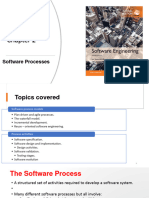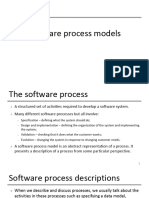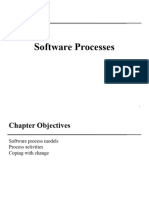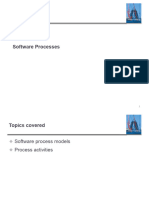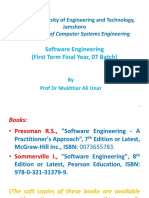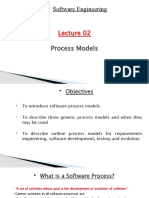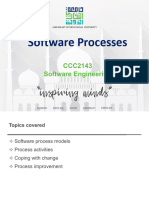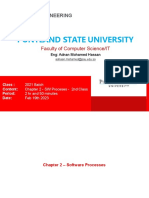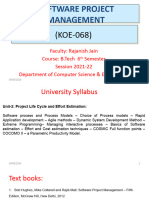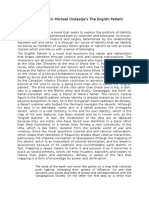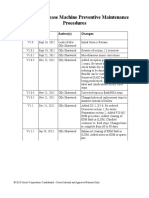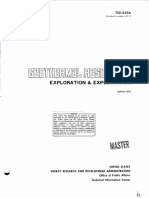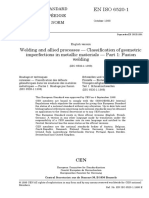0% found this document useful (0 votes)
8 views25 pagesLecture 2
The document discusses software processes and models, outlining key concepts, classifications, and activities involved in software development. It introduces three generic software process models: the waterfall model, incremental development, and reuse-oriented software engineering, along with their advantages and disadvantages. Additionally, it emphasizes the importance of adapting processes to accommodate changes in requirements and the integration of good software engineering practices.
Uploaded by
mohammedalfeky14Copyright
© © All Rights Reserved
We take content rights seriously. If you suspect this is your content, claim it here.
Available Formats
Download as PDF, TXT or read online on Scribd
0% found this document useful (0 votes)
8 views25 pagesLecture 2
The document discusses software processes and models, outlining key concepts, classifications, and activities involved in software development. It introduces three generic software process models: the waterfall model, incremental development, and reuse-oriented software engineering, along with their advantages and disadvantages. Additionally, it emphasizes the importance of adapting processes to accommodate changes in requirements and the integration of good software engineering practices.
Uploaded by
mohammedalfeky14Copyright
© © All Rights Reserved
We take content rights seriously. If you suspect this is your content, claim it here.
Available Formats
Download as PDF, TXT or read online on Scribd
/ 25
